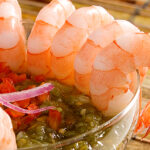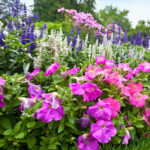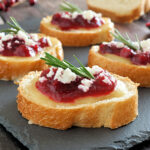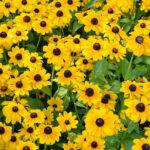Save Your Seeds
Before pulling out your annuals, collect some seeds for the next season. Perennial seeds, such as coneflower, can be collected or left for winter interest and feeding wildlife. Gather your seeds and make sure they are completely dry before storing them in an airtight container over winter.
Cool Season Color
Keep things colorful with a few cool season plants like mums, pansies, and ornamental grasses. You can also create a seasonal planter with rich colors and textures that will stand out against the drab winter landscape. Think colorful berries and branches, evergreens, and decorative touches such as ribbons, ornaments, or lights.
Learn more about planters Feed Your Lawn
Fall is the absolute best time to feed, helping your lawn through the winter and into the spring. Feeding your turf will act as an insurance policy on that lawn that you’ve been working so hard on all summer long. It will provide nutrients essential for the remainder of the growing season and encourage root growth for a strong comeback in spring. Fertilizing also helps your lawn recover from any injuries or neglect that may have happened over the summer.
Learn more about fertilizers Clean Up
Rake your leaves often or try a mulching mower to keep your grass clear of debris. If you have an abundance of leaves, now may be the time to try your hand at composting!
Raking gadget Dig Up your Dahlias and Gladiolas, Cannas
When leaves turn yellow and die back, you can cut them down to about 4-6” from the base. Carefully loosen the soil around the plant using a garden fork and taking care not to damage the tubers when lifting them. Remove as much soil and rinse well. Allow tubers to dry completely before storing them for winter. Label your tubers to keep an accurate inventory.
Learn more about Dahlias Winterize
Prepare your mower, rototiller, and other outdoor equipment for hibernation. Make sure all fluids have been drained, inspect for wear and tear and sharpen blades. Drain hoses before storing, make sure water is turned off if frozen pipes is a concern in your area. Don’t forget about other items that may freeze such as water features and irrigation lines.
Winterizing irrigation system Plant Your Heart Out
Trees, shrubs, perennials and bulbs do great when planted in the fall. Transplanting and dividing perennials is a favorite fall activity. Established gardens can become overgrown and need a little thinning. Check out local gardening groups or end of season sales at your garden center. You can plant up to about six weeks before the ground freezes, which is usually around mid-November for most of the country.
What to plant in the fall Protect Tender Plants
Wrap trees and shrubs that can be damaged by extreme swings in temperature or heavy snowfall. In some regions, rose bushes can freeze if not properly protected. To avoid damage or dieback, use straw and fallen leaves to surround your roses for a little insulation. You can create a cylinder around the bush with some wire mesh to contain the straw and leaves as well.
Plan Ahead
Plot out new locations for new beds by laying out plastic or thick cardboard to kill grass and weeds for future garden beds. Mark where your existing plants are so you don’t disturb them in the spring. Use small stakes or map out your plantings on paper for safe keeping.
Planning a vegetable garden 















